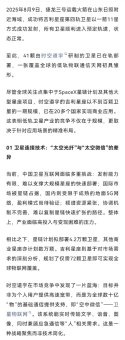You are using an out of date browser. It may not display this or other websites correctly.
You should upgrade or use an alternative browser.
You should upgrade or use an alternative browser.
China's Space Program Thread II
- Thread starter Blitzo
- Start date
by78
General
Haiyang Oriental Spaceport will build a new permanent launchpad for liquid rockets on Lianli island (连理岛), an artificial island constructed just offshore of Haiyang. The image below shows a bidding announcement for the launchpad project.

Winning bid has been announced for the project to build a launchpad on Lianli island.


by78
General
Three more high-resolution images from the tests of the manned lunar lander.



SAR satellite image of the test fixture.


1) I was intrigued by that " new remote sensing constellation announced with support from the government of Chengdu’s Tianfu New Area, with total expected investment of ¥8B (~US$$1.2B). The all-singing, all-dancing constellation is envisaged to be “ultra-low orbit, equipped with high-resolution visible light, SAR, video, other remote sensing payloads, on-board AI computing models”, since a ¥8B investment is not nothing.
Looking into it Tiānfǔ zhīyǎn (天俯之眼) is signed and implemented by Insight Spacetime (Chengdu) Technology Co., Ltd. (洞察时空(成都)科技有限公司), Insight Spacetime is a new company establishhed in april in Chengdu with a registered capital of ¥120M. I could find link to two personalities involved in satellite constellations business:
static.cninfo.com.cn/finalpage/2025-04-29/1223369313.PDF
It seems to be controlled by Bu Zhiyong, who was former (until last year) and long time CEO of Shanghai Hanxun Information Technology Co., Ltd. a company which among other thing provides the communication payload for the Qianfan/Spacesail satellites and are generally considered as one of the major subcontractor of the constellation, so it's a company that has experience with mass production for constellation, Shanghai Hanxun also has 20% stake in the company.
The other personality seems to be, through the "Lìdǐng shēnmóu" company, Zhang Xuejun, the director of the Changchun institute of optics, who is known for the Jilin constellation but also participation in many chinese private, public and military observation satellites and telescopes.
So these ties may explain the significant investment this new company is getting.

2) There is an interesting rumour going around.
Back on may 27th, famous PLA-watcher Cute Orca wrote "F.F.S.C." on their Weibo, it was generally interpreted as the acronym for Full flown staged combustion (the engine cycle).
Last week a rumour appeared that Landspace conducted a first fully integrated test of a FFSC engine on may 25th. For reference, Landspace has been developping the Raptor-class BF-20 engine.
If this rumour is real then one can only wonder why they didn't publicise it, maybe it was only a subscale test of a technological demonstrator?
3) Talking about landspace the 2nd ZQ-3 S1 seems to be undergoing final assembly
Interestingly, looking at the second picture it does seem that the Second stage has been integrated since there is a steel section after the Interstage. This may be some of our first look at the ZQ-3 S2.
There has also been a rumour going around that Landspace has conducted a static fire of the ZQ-3 S2 but has chosen not to publicize it.
4) And finally we've got a better look at the test model/pathfinder currently on the CZ-10 Mobile platform near the LC-301 CZ-10 launch pad in Wenchang

Yo anyone else hard about the Smart Dragon-03 satellite launch? It's by Geely.
escobar
Brigadier
Global Low-Orbit Satellite Constellation Boom: How Will Geely's Satellite Fleet Play the "Differentiation Card"?
Context: The global satellite industry is experiencing rapid development, with projects like SpaceX's Starlink leading the charge.
Geely's Approach: Focuses on differentiation by targeting Satellite IoT (Internet of Things) instead of competing directly in the saturated satellite internet market. Emphasizes low power consumption, low bandwidth, and real-time performance for "things" (devices, sensors) rather than "people." Low-bandwidth, ultra-low-power modules (<$10) that send text, voice, image and SOS pings.
Deployment Progress: Current status: 41 satellites (60% deployed), Target: Complete 64 satellites by end-2025 for global coverage
Case Studies: Oman fishing fleet – 99.15 % message success, >99.97 % network availability. Malaysia (ADISB joint-venture) – smart-port and digital-city integration. Morocco – 80 % transport-market partner for rapid rollout. Service live in 20+ countries before Phase-1 completion.
Conclusion: By merging automotive mass-production discipline with focused IoT connectivity, Geely has turned a 72-satellite constellation into a commercially viable, globally relevant answer to the last-mile problem for billions of unconnected devices





That's the launch they're discussing in the first three posts on this page, the Jielong-3.Yo anyone else hard about the Smart Dragon-03 satellite launch? It's by Geely.
Have any other Chinese EV companies done this? Just curious. For a car company, this is an impressive feat.That's the launch they're discussing in the first three posts on this page, the Jielong-3.














